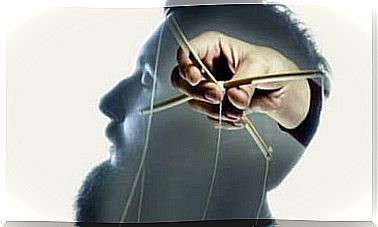Autonomy And Heteronomy: An Important Difference

Jean Piaget was a Swiss psychologist and teacher who studied the subject of moral judgments very thoroughly. He developed the concepts of autonomy and heteronomy. These refer to how a person learns and applies moral norms. From his perspective, this ethical development is closely linked to the development of intelligence and should lead us from moral dependence on others to independence.
According to Piaget , a child when it is born has not had time to develop its brain enough to understand the concepts of “good” or “bad”. At this stage, autonomy and heteronomy have not yet developed. This is called “anomie”, which means that there is no moral conscience present or even anything like it. The child simply acts as needed, no matter what it does affects others. In cases where they are not looking for a specific reaction. What then is autonomy and heteronomy?
As the child grows, they become aware of the moral value of their actions. Their parents, their teachers and all government figures are responsible for establishing the child’s moral consciousness. The child then acts in accordance with what others approve or do not approve. This is called heteronomy.
Later, when the process of brain development is complete, a new phase of development comes. The child develops and gradually achieves autonomy, in ethical and moral respects. This means that they learn to act on the basis of what their own conscience dictates.
According to Piaget’s perspective, the concept of “rules” develops in accordance with moral development. Rules are the commands that in principle seek positive behaviors in individuals or groups. We believe that the rules are more legitimate (universal) when they exist to avoid conflicts, promote growth, respect and, above all, justice. It is important to keep this in mind, as there are also destructive rules.

What basically exists is a “motor rule”. This type of rule follows some basic instructions. An adult must intervene directly or physically for this. An example is when a child walks towards a dangerous place and an adult intervenes to prevent it.
After that comes what we can call a “coercive rule”. This happens during the first years of childhood. At this stage, the child follows the norm simply because an adult says they must. They do not even think about questioning the rules because everything the adult says about morality seems almost sacred. Breaking a rule is for the child, however absurd it may sound, a reason to be punished. This takes place in the heteronomy stage.
Then comes what we might call the “rational rule.” This rule is not enforced by others, but by the individual himself in accordance with what others think. The person is aware of the value of the norm he is performing. If the rule or norm is irrational, the person does not follow it, but acts autonomously and not according to an authority. Obedience is no longer unconditional.
For those who have remained in the heteronomy stage, what is “good” is what the majority does. According to an authority. Individuals think that if there is a rule, it is because it is good. They do not look at the moral content, but more at who the rule comes from. This applies not only to children but also to adults. It explains why many people and societies can even act against themselves because of certain rules.

In heteronomy, one does not examine the intention. The only thing that is examined is the result of the behavior, not the intention behind it. Piaget asked a group of children to judge two acts: in one case, a child spilled ink on a tablecloth, unintentionally, but the stain was huge. In the second, a child intentionally dropped a drop of paint on the tablecloth. When he asked the group of children who would judge the actions, who had the worst behavior, the children answered that it was the child with the biggest stain.
One of the main characteristics of heteronomy is rigidity. No intentions, no context, no reasons are evaluated. The only thing we see is the extent to which a norm was followed. This is what many adults do when faced with infidelity, failure to meet a goal or some offensive behavior.
In autonomy, on the other hand, intention is a decisive factor. Justice as well. If a behavior goes against the rules but promotes justice, it is defensible. There is a high regard for morality as a means of equality, cooperation and respect for others. Whether it is also a rule, is less important. In that respect, we would certainly build better societies if more people developed individual autonomy.









